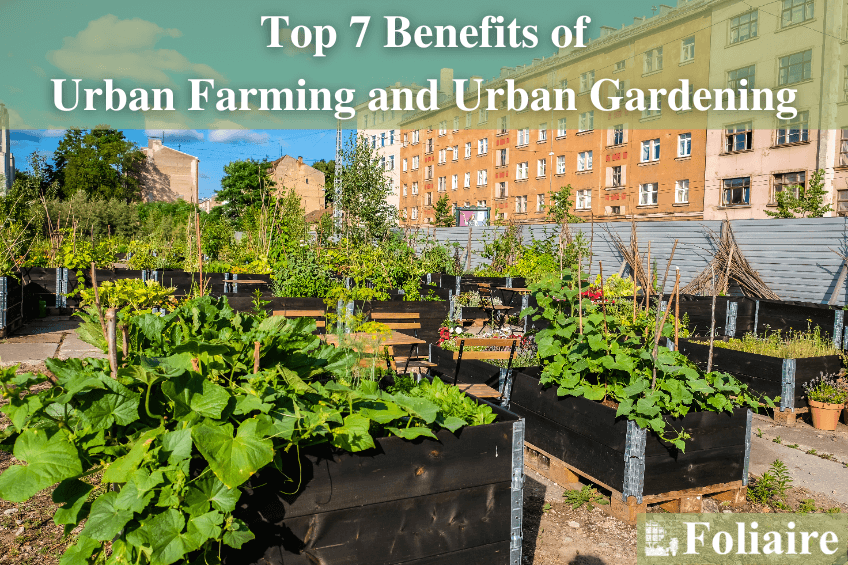Top Guidelines Of City Blooming
Wiki Article
A Biased View of City Blooming
Table of ContentsCity Blooming for BeginnersThe Ultimate Guide To City BloomingThe Basic Principles Of City Blooming The City Blooming PDFsThe Only Guide for City Blooming
Interested in growing food for sale in the City of Chicago? Below is a list of often asked questions pertaining to the guidelines and regulations that cultivators need to think about when preparing a city agriculture project.
The zoning modification does not customize any various other codes dealing with composting, structure permits, purchasing or renting City owned property, business licenses or environmental contamination. There are existing codes that control these problems and they stay completely effect and might apply to your task. Area yards are typically owned or handled by public entities, civic organizations or community-based organizations and kept by volunteers.
Urban farms grow food that is planned to be offered, either on a nonprofit or for-profit basis. Due to their business function, city ranches call for an organization license.
The Buzz on City Blooming
Composting is allowed but only for plant material that is generated and made use of on site. The quantity of garden compost product can not surpass 25 cubic lawns at any kind of provided time according to the requirements in 7-28-715 of the City's Municipal Code. Yes. Because the dirt at many new garden websites needs amending, garden compost, dirt, timber chips, or other materials can be acquired to construct or enhance the expanding area - indoor plants.
If a building permit is required after that the hoophouse will be taken into consideration an accessory building. You can figure out even more concerning the structure authorization needs by contacting the Department of Structures. The 25,000-square-foot size restriction is intended to avoid a single neighborhood yard from dominating a given block or interfering with the block's existing property or business character.
The limit does not relate to gardens found in Public Open Area (POS) districts. Can there be greater than one neighborhood garden that is 25,000 square feet on a single block? Yes. The size limit puts on specific yards, not to specific blocks. No. Fencing is not required, however, yards that have huge parking lot may be called for to install fence or various other landscape design functions.
City Blooming Fundamentals Explained
B1 & B2 districts require that all industrial use tasks be carried out indoors. R areas limit industrial activity. The laws mirror the function and intent of the Zoning Code. Is fence required for metropolitan farms? Yes. Fences may be called for, along with landscape design and testing, for specific parking lot and outdoor work or storage space locations depending on area and the specific task taking area.Yes. Urban farms need structure permits and zoning authorizations before building and construction. Other kinds of city testimonial might be needed relying on details structures, activities, size, landscaping, licensing, public heath and stormwater management concerns. Much of these demands are identified in the task design or permitting procedure, however, the candidate may be liable to separately identify details licenses or allows that might be needed.
The Department of Business Matters and Customer Security can help figure out the specific type of service certificate that's called for. Off road car parking is required for a lot of industrial projects in Chicago. The called for number of car parking spaces is based on the number of employees functioning on website and not the square video of the expanding area.
How City Blooming can Save You Time, Stress, and Money.

A city ranch can sell compost product created on site, however, the operation should conform with the laws in 7-28-715 of the Chicago Municipal Code. Aquaponic systems are permitted inside your home on urban farms in lots of zoning districts.
As much as five hives or nests of honey bees may be kept as an accessory use. Beekeepers must sign up with the Illinois Department of Agriculture. To find out more about the recommended zoning modification you might get in touch with the Division of Housing and Economic Development, Bureau of Planning and Zoning at 312.744.8563.
, which takes area in rural locations a knockout post at the edge of residential areas.
Examine This Report on City Blooming
, who look for to develop social networks established on a shared principles of nature and community holism. These networks can create by method of formal institutional assistance, coming to be incorporated right into neighborhood town planning as a "shift town" movement for lasting urban development.Some of the very first proof of urban agriculture comes from Mesopotamia.
Report this wiki page